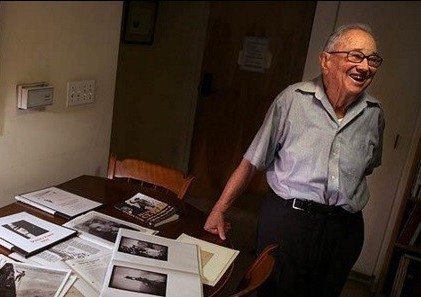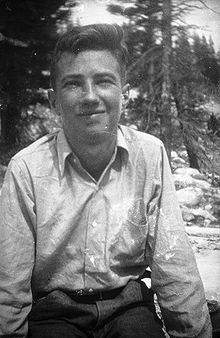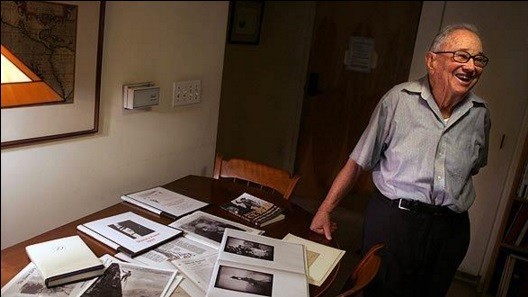Legendary American Climber Glen Dawson Lives to 103

American Glen Dawson was a leading climber in the 1930s and died on March 22 at the age of 103.
Dawson led the way in the 1930s with a number of difficult ascents, including one of the first 5.8 climbs in America. He is also well-known for his first and second ascent of the East Face of Mount Whitney.

The following is a list of his ascents with links to stories and archives by those who knew him best.
Steve Grossman announced Dawson’s passing on the Supertopo forum here, in it he wrote, “Having lived well over one hundred years, Glen was a climber’s climber and lead a full and consequential life introducing many people to the mountains through his extensive involvement with the Sierra Club RCS in the Los Angeles area.
“He was involved in some of the earliest technical climbs in the Sierra Nevada such as the East Face of Mount Whitney with Norman Clyde and Robert Underhill. Glen was a consummate gentleman and patron of the arts and letters while running Dawson’s Books, the family concern, for many decades.”
In 1928, he and his father were guided up the Matterhorn in Switzerland. The ascent was the first of many notable climbs to his name. In 1930, he joined the Sierra Club on their High Trip and made ascents of 18 mountains in 24 days.
The following year was one of Dawson’s most impressive and he was only 19. With Jules Eichorn he made the first ascents of Eichorn Pinnacle and the East Face of Mount Whitney, now one of America’s most classic routes at the grade. For photos and a story by Dawson of his 1931 climbing season, visit here.
In 1932, Dawson took part in the Sierra Club High Trip with nearly 200 other climbers. With a number of climbers, he climbed to the tops of many mountains and made the first ascent of the west chute on the south face of Mount Russell. He also travelled to Baja and made an early ascent of El Picacho del Diablo with four others.
The following year, Dawson and others made the first ascents of Dawson Minerat, the highest of The Pinnacles, Peak 13,332 and a new route up Middle Palisade. He and Eichorn were involved in a search and rescue for climber Walter Starr, who was later found by another climber. It was the last time Dawson and his good partner Eichorn would climb together.
In 1934, he and New Zealand climber Tony Charlton visited Canada and climbed Mount Hungabee and Mount Temple. That winter, he attempted difficult winter ascents and helped form the Ski Mountaineers of California. The next year, he made the first ski ascent of Mammoth Mountain, years before chair lifts carried people.
Over the next few years, Dawson travelled around the world climbing mountains. He first climbed the south face of Marmolata in the Dolomites and went on to climb nearly three dozen big routes in the Alps in less than two months. He then climbed in the U.K. and Soviet Union before taking a train across Siberia to Japan, where he traversed Mount Fuji.

In 1937, he focused on technical rock routes and made the first ascent of The Mechanic’s Route at Tahquitz Rock, it was one of the first 5.8 routes in America. Dawson then climbed a new route on Mount Whitney with a group of climbers, including his brother Muir, which they called the East Buttress. It was the final year Dawson was at the cutting-edge of the sport.
He became the director of the Sierra Club, a position he held until 1951. He served in the military in WWII working as a climbing and ski instructor for the Tenth Mountain Division at Camp Hale in Colorado and Italy. After the way, he took over Dawson’s Book Shop from his father Ernest with his brother Muir. He published over 350 collectible books and was later awarded an honorary Doctor of Humane Letters degree from Azusa Pacific University.
He was awarded the Sierra’s Club’s Francis P. Farquhar Mountaineering Award in 1973 and in 2011 the Walter A. Starr Award. In 2008, he wrote the forward to Climbing Mt. Whitney, as the only living member of the first ascent team.


